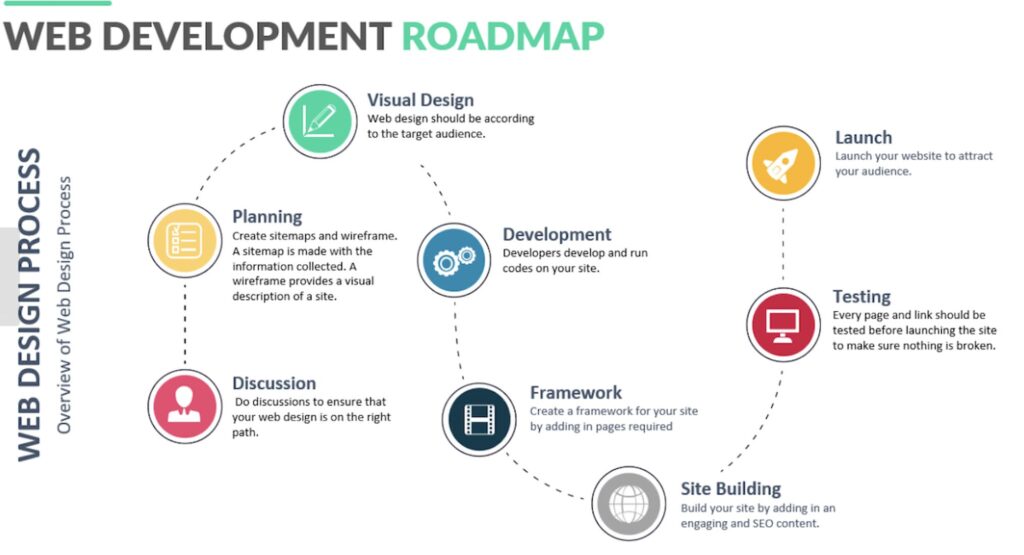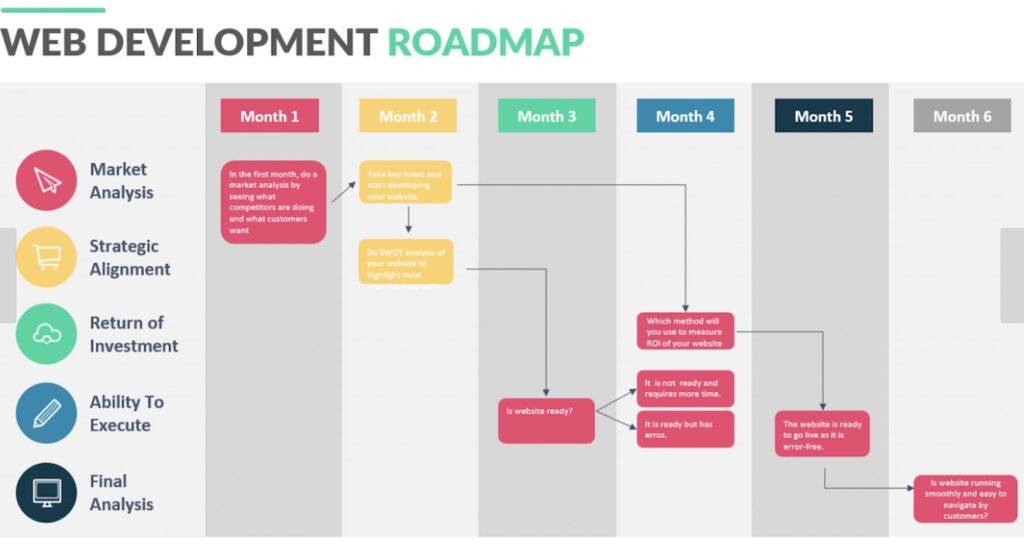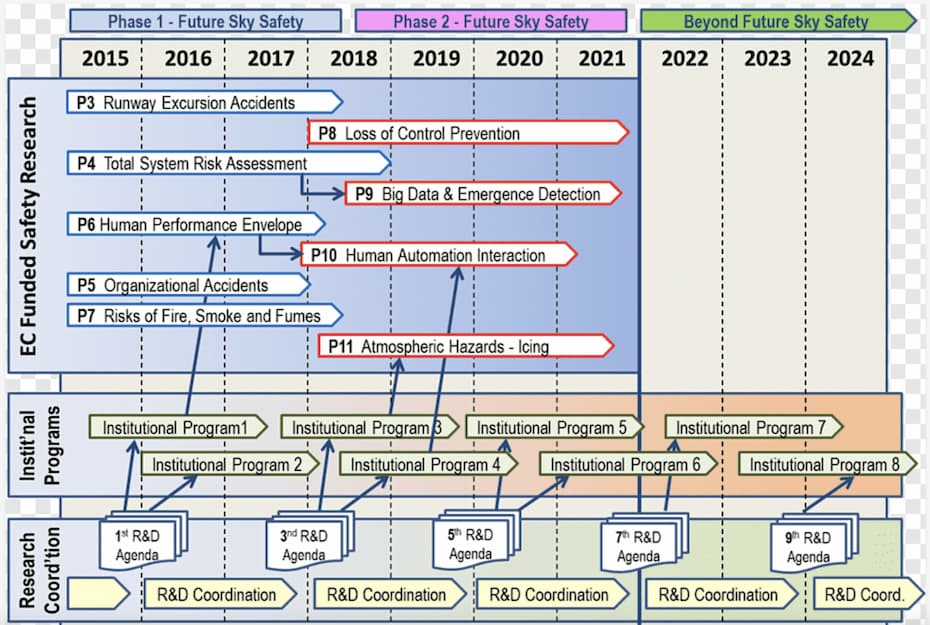Even in our normal daily life, while we are going somewhere, we use many navigation programs, especially Google Maps, which offers us the shortest and most accurate route alternatives to arrive at our destination faster and not get lost on the roads without a shortcut. We don’t even let go of it most of the time. You ask why? Because these programs have a map of the world installed and if we talk about Google Maps, for example, since 2007, when it appeared, it has also been updated every year and shares with us a lot of different information about the target we are looking for. So it makes our job easier. We are not lost on the roads and we arrive at our destination shortly and correctly.
- So, while you are using a map even on a straight road, do you have a map in your work life or in your own social life?
- Do you know where and how to get there?
- Even if you know where to go, do you know the shortest and most accurate way that will take you to this goal?
- If you don’t know, do you know who knows, or in other words, who knows?
- Do you know how to create your road maps by combining knowledge, decency, your values and experiences?
Just like the navigation program we use while driving on a flat road, imagine that you have a map in your hand when moving toward your goals in business life, and that all your employees in your company also have this map in their hands. Wouldn’t your job be very easy? No one lost their way, everyone moved towards the same goal as US. What is it about? Then come now, let’s look at how such a roadmap is being prepared for businesses.
What is a Roadmap?
Whether your goal is “Institutionalization”, “Digital transformation”, “Smart Company – Smart Business” or whether you want to create a new innovative product, they all go to the same door, the same road. After all, you need a “Road Map”. A road map is a visualized version of a strategic plan. In other words, they are outputs. So, first, you need a bold vision of what you want to achieve and a solid strategic plan on how to make your desires a reality. The rest is to visualize it and translate it into a road map.
- A roadmap is a time-based plan that defines where a business is, where it wants to go, and how to get there.
- It is a visual representation that organizes and presents important information about future plans. Strategic roadmaps are a common approach to planning.
- It is an effective communication tool for managers and links strategic initiatives with business plans.
- The roadmap acts as a focusing tool, sequencing efforts aimed at achieving important goals.
- Strategic decision-making is the main factor determining the success of the company.
- Correct decisions require timely and relevant information.
- The strategic roadmap assumes that different departments and individuals in the organization have vital information for strategic decision-making.
- A road map Deciphers a destination in terms of destinations, timetables, and intermediate stops on the way.
- It shows the practical steps necessary to achieve the desired goal.
- It takes into account the interdependencies between the steps and predicts alternative paths that help optimize resource allocation and minimize risks.
- The roadmap is a collaborative strategic planning process.
How to Prepare a Roadmap?
The first stage is to conduct a corporate analysis and determine the current state of the enterprise. The second stage is to set a vision, that is, a goal. This goal is a future situation that the enterprise will want to happen, and this goal is S.M.A.R.T. (Specific, Measurable, Achievable, Repeatable, Time Bounded). The third stage is to determine the gap. We can formulate it as Space = Target – Location. The critic capabilities needed for visions are determined, then a space analysis is performed between the current capabilities and the need capabilities. Finally, an action portfolio based on space analysis is recommended. The first roadmap for small companies is a framework for thinking about strategic planning. Roadmaps are not static tools, several iterations of the process may be required to see the full benefits. A road map does not predict the future. It is a collaborative tool for creating strategies and taking action toward a desired future situation. It ensures the evaluation of technological changes and business opportunities to necessary realize the desired future.

The space analysis that needs to be done before creating the roadmap consists of the following steps:
- If we think that we are using a Navigation program for the road map, that is, Google Map, we need 2 (two) points, that is, information, just like in Google Map. One of them is location information, and the other is the target.
- Location information, the current structure of the institution in processes, human resources and information technologies are analyzed.
- With the 5N + 1K rule, the target information is taken from the enterprise.
- The gaps between them are identified.
- From the starting point, that is, from the current position of the enterprise, a plan is created that includes the necessary improvements in processes, human resources, and information technologies to achieve its goal.
- According to the fact that success will come with the work of the institution as WE, competence analyzes of employees will carry out, and all managerial competencies that will lead the institution to the targeted success are determined.
- All of these are evaluated by the project team or the board of directors within the company.
- After the meetings, priorities are determined and a strategic plan is created.
- This approved strategic plan will shared with all white-collar managers, and WE set out as one.
Then, as I mentioned before, it’s just to visualize it and share it with the whole team.
What are the Benefits of Creating a Roadmap?
The main benefit of road mapping is to visualize your business strategy, making it easier to communicate with all stakeholders and adapt to and follow business results. Designing your roadmap to be visual and attractive is the key to ensuring its understanding, follow-up, and stakeholder participation. Old-fashioned static roadmaps are usually not interesting. It consists of text in the form of text written only in words. In these maps, people miss the details because they don’t like to read very much. As such, it is hard to share it in a way for both everyone and the audience to understand. A common understanding and the goal do not form in the minds. The lack of a common roadmap structure also leads to inconsistent reporting and progress problems. Without an infographic version of the strategic roadmap, stakeholders cannot see gaps in technology easily, resources, or funding. It is difficult for leaders or teams as relationships or interdependencies to understand or track the impact of their decisions cannot be easily visualized. When there is no real-time mechanism for employees to provide feedback on the strategy, the roadmap becomes invalid, and the process does not work capably. If we know that 60% of the cells in the human brain function to see, visualizing something with infographic elements will always support comprehension. With common memorized goals and motivation support, it is much easier and faster for a business to achieve.
Roadmap Examples


Roadmap for companies

Corporate Analysis and Roadmap Consultancy
The study that we call institutional analysis or current situation analysis consists of the following steps: Situation Analysis
- Process Analysis
- Analysis Of Human Resource Processes And Used Modules
- Information Technology Analysis
- Analysis Of The Organization’s Digital Memory (Corporate Memory) Through Kpis (Managerial Control Criteria)
- Business Intelligence Analysis
- Basic Financial Statements
- Digital Transformation Maturity Test
- Employee Digital Literacy Analysis
- Digital Marketing Process Analysis
Strategy and Targets
- Control of the organization’s current strategies
- 3,5,10 annual targets and expectations (turnover, customer, sector, product, profitability, digitalization, etc.)
- Existing risk analysis (risk management policies) studies
- Whether benchmarking studies have been performed
- Defining the expectation of digital transformation in a SMART (Specific, Measurable, Achievable, Repeatable and Time-bound) way
Determine The Gaps Between The Current Position And The Target
- Evaluation meetings (kick-off meetings)
- Setting priorities
- Creation of the Road Map
As a result, the requirements for the integration of strategy, culture, organization and capabilities:
- Basic Strategies And Plans
- Establishment Of A Management-Supported, Governance-Oriented Development Cycle
- Steps To Constructed With Effective Governance On Digital Literacy, Digital Competencies, And Incentive & Premium Tools
- Digital Transformation Steps To Built On Digital Memory
- Technological Requirements
- Requirements for customer awareness
- Online and offline integration steps
- Establishment of a performance management system for management monitoring (for the integration of people, processes, and technology)
- Internal and external customer information
What is Corporate Analysis and What Does It Do?
- Aimed at corporate analysis and roadmap
- Translating your goals into strategies,
- Your strategies to action plans,
- Turning actions into results.
At the end of this analysis study, the following questions are answered.
- The main goals of the trip
- Possible obstacles, difficulties
- Projects aimed at the target subject
- Scheduling of projects
- Responsibilities
For the determined target study to be carried out successfully, to provide the highest value that will be achieved as a result of this process, the current state of the enterprise is examined with an external eye and the details related to such a process are correctly perceived by the relevant stakeholders.
As a result of this analysis, two results are output:
- Roadmap Data File
- Recommendation Report
The Benefits of Corporate Analysis
Businesses produce many things with a quality variety of products and services. By preventing corporate blindness, corporate analysis unlocks many unsolved but proven problems by looking at the organization from a third point of view, especially the point of view of both the internal customer and an external customer. If we look at the benefits;
- The mechanism of decision-making is revealed in corporate
- Process, deficiencies in human resource and technology integration are revealed
- Needs are determined on the way to the target
- The necessary training is determined to increase the employee’s competence with the target
- Technological needs are determined.
Corporate Analysis Consultancy
In corporate analysis consulting, as described above, the strategic roadmap is determined by the analysis study carried out first on the way to the target specified by the enterprise.
Our Aim;
- Translating your dreams into strategies,
- Translating your strategies into action plans.
The analysis study is the situation analysis
- Process analysis
- Analysis of human resource processes and used modules
- Information technology analysis
- Analysis of the organization’s digital memory (corporate memory) through KPIs (managerial control criteria)
- Business Intelligence analysis
- Basic financial statements
- Digital Transformation Maturity test
- Employee Digital Literacy analysis
- Digital Marketing process analysis
Strategy and Targets
- Control of the organization’s current strategies
- 3,5,10 annual targets and expectations (turnover, customer, sector, product, profitability, digitalization, etc.)
- Existing risk analysis (risk management policies) studies
- Whether benchmarking studies have been performed
- Defining the expectation of digital transformation in a SMART (Specific, Measurable, Achievable, Repeatable and Time-bound) way
- Identifiy the gaps between the current position and the target
- Evaluation meetings (kick-off meetings)
- Setting priorities
- Digital Transformation Roadmap (A study that should be in any case nowadays)
Requirements for the integration of strategy, culture, organization and capabilities;
- Basic strategies and plans
- Establishment of a management-supported, governance-oriented development cycle
- Steps to be constructed with effective governance on digital literacy, digital competencies, and incentive & premium tools
- Digital transformation steps to be built on digital memory
- Technological requirements
- Requirements for customer awareness
- Online and offline integration steps
- Establishment of a performance management system for management monitoring (for the integration of people, processes, and technology)
- It is in the form of internal and external customer information.
Frequently Asked Questions about Road Map
How to create a road map?
The first stage is to conduct a corporate analysis and determine the current state of the enterprise. The second stage is to set a vision, that is, a goal. This goal is a future situation that the enterprise will want to happen, and this goal is S.M.A.R.T. (Specific, Measurable, Achievable, Repeatable, Time Bounded). The third stage is to determine the gap. We can formulate it as Space = Target – Location. The critic capabilities needed for visions are determined, then a space analysis is performed between the current capabilities and the need capabilities. Finally, an action portfolio based on space analysis is recommended.
What is the strategic roadmap?
The strategic roadmap is a bridge (or connection) between strategy and implementation. Verification of the results in the strategic roadmap with a clear understanding of the organization’s capabilities, gaps and priorities.
What are the benefits of corporate analysis for companies?
By preventing corporate blindness, corporate analysis unlocks many unsolved but proven problems by looking at the organization from a third point of view. While achieving the goal, the missing specialties will be completed with the support received from outside. The information gives a new vision to the organization and competencies to the employees. You can click to download the Roadmap Study Presentation file.
https://www.gulaysavas.com.tr/wp-content/uploads/2022/07/RoadMap.pdf